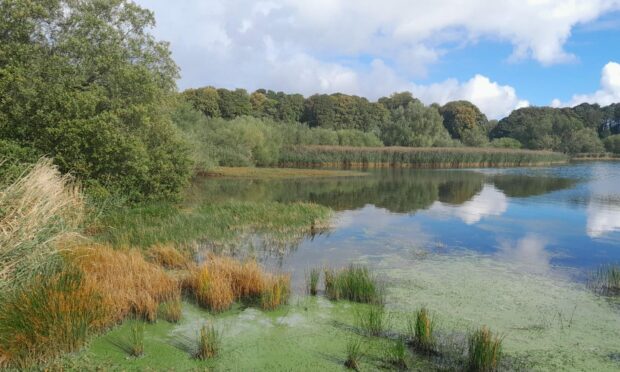Why is Loch Leven in trouble and what can be done about it?
The experts have been analysing the water quality of Loch Leven since 1968.
After years of hard work, the loch was finally thriving by 2007.
It was around 2015 when things started to take a turn for the worse. But what changed?
There are a number of factors posing a threat to the health of Loch Leven today.
Total phosphorus in Loch Leven is far higher on average in 2022, data shows.
A build-up of phosphorus can lead to algae blooms in the loch. The blue-green variety can have some pretty horrible side effects, including neurological issues.
So what can be done about these phosphorus levels and the potentially toxic algal blooms?
1. Limit sewage getting in the water
Sewage is by far the most well-known Loch Leven pollutant.
The nearby Kinross Waste Water Treatment Works is designed so that it overflows during times of heavy rainfall once storm tanks are at full capacity, rather than causing flooding within communities.
In October last year, MSPs called for improvements to be made to the Scottish sewer system.
Lib Dem Kinross-shire councillor Willie Robertson has been passionately fighting against repeated sewage overflows into the loch.
But the experts say there isn’t one simple answer.
Dr Linda May is a freshwater ecologist at the UK Centre for Ecology & Hydrology (UKCEH). She has been studying the loch since 1976.
She does not see sewage as the biggest threat and believes there needs to be a combined effort to improve the “unfavourable condition” of Loch Leven.
“It isn’t just the sewage,” she stressed.
“What I would like to see happen is for everybody to reduce their phosphorus inputs into the loch.
“So that would be the sewage works but also the farmland.”
Septic tanks for “unsewered homes” nearby the loch are also a problem for the water quality.
2. Keep a closer eye on farmers
Diffuse sources are another threat to the health of Loch Leven. That means things like farm yard manures, dirty yard areas, cultivation practices, fertiliser application and livestock management.
Liberal Democrat councillor Claire McLaren argued that farmers were not to blame. Clare, who is her party’s agricultural spokesperson said: “We all sit at desks and computers. But their office is the rural environment.
“Farmers are not going to trash their own work environment.”
The then Scottish Natural Heritage agency (now NatureScot) published this study in 2017 which pins down “diffuse sources” as the main cause of phosphorus in Loch Leven.
It states that “these should now become the main focus of further plans to maintain or improve loch water quality.”
Sepa has been visiting the farms around Loch Leven since November last year and “to ensure best land management techniques are being used, and appropriate pollution control measures are being followed.”
A spokesperson for the environmental agency said they are “prepared to use regulatory powers if required”.
3. Do more to cut emissions
Remember when I said that 2015 was when things at Loch Leven began to get worse?
2015 saw extreme weather globally and ended with almost 200 nations signing The Paris Agreement, an international treaty to fight climate change.
Dr May believes climate change is a huge contributor to the algal blooms at Loch Leven.
“It was around 2016 that climate change really seemed to kick it up [a notch].
“Things are different now, there are different drivers,” explained Dr May.
“The temperature of the loch has increased quite dramatically. If you compare the graph from the 60s and 70s to now, the difference is amazing – it’s so much warmer.
“The increasing temperature makes the loch more sensitive to what goes into it.”
Less rain in 2022 (also thanks to climate change) has heightened the risk of Loch Leven algae blooms, says Dr May.
What next for Loch Leven?
The UKCEH has launched an online portal for sharing data about the loch – which can help everyone understand the range of problems at Loch Leven.
“The drivers that make this problem happen are really quite complex, and we need to understand them properly,” Dr May said.
“That’s what the portal is about. It’s about helping people understand the complexities of Loch Leven and what we do there, which we’ve been doing since 1968.
“Algal blooms are a natural thing under certain weather conditions. You can’t always do something about it.
“But the inputs from the farmland and the sewage works should be kept as low as we can possibly keep them because they really aren’t helping.”












Conversation